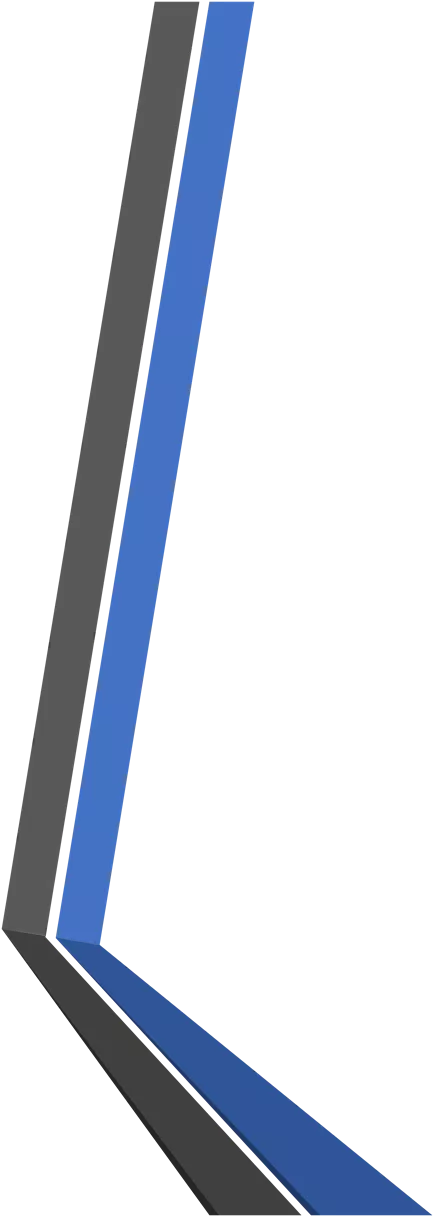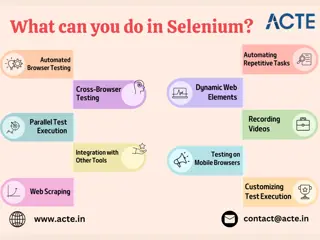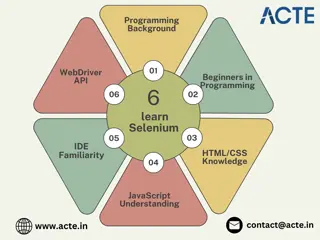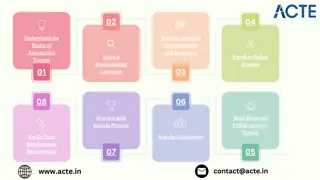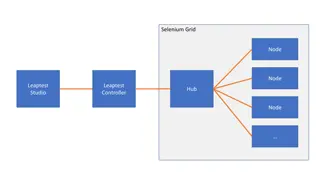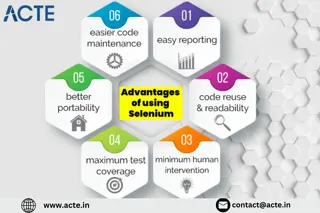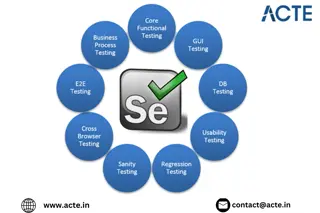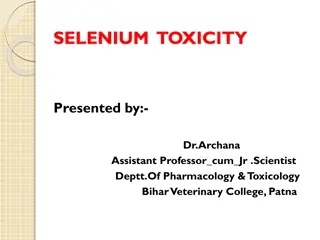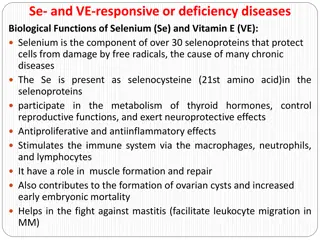Selenium Chronic Aquatic Life Standard Implementation Revision 4
Applies largely to application in NPDES permitting and involves significant policy revisions. Provides options for compliance measurement through fish tissues analysis. Specifies study plans for data collection to calculate protective water column concentrations and NPDES limits. Re-calculates BAF-derived limits at permit reissuance. EPA is reviewing applications thoroughly. Additional approach includes semi-annual compliance monitoring of fish tissues.
Download Presentation

Please find below an Image/Link to download the presentation.
The content on the website is provided AS IS for your information and personal use only. It may not be sold, licensed, or shared on other websites without obtaining consent from the author. Download presentation by click this link. If you encounter any issues during the download, it is possible that the publisher has removed the file from their server.
E N D
Presentation Transcript
WV Selenium Chronic WV Selenium Chronic Aquatic Life Standard Aquatic Life Standard Implementation Implementation - - Revision 4 Revision 4
Applies largely to application in NPDES permitting Keeps previous approach of bioaccumulation factor (BAF) calculation Significant Significant policy policy revisions on revisions on 9/10/18 9/10/18 Provides additional option to measure compliance directly through analysis of fish tissues Shortens requirement to redo fish for BAF approach from 3 years to at reissuance unless < 1 year
Study plan for single visit survey site and applied to outlets using watershed approach where applicable WVDEP approval required Fish tissue and water samples collected per sample plan Multiple tissue composites of fillet, egg/ovary, or whole body Minimum 6-12 months of water chemistry Calculate protective water column concentration (PWCC) Input average aqueous concentration and highest tissue concentration Use TSD to calculate NPDES limits for outlets using PWCC BAF calculation BAF calculation approach (a review) approach (a review)
Re-caluate BAF derived limits at permit reissuance (>1 year) To date 111 study plans have been submitted encompassing around 200 study sites 15 permits have been approved, 3 are under review currently Lowest selenium limit to date 5.0 g/L monthly average & 8.7 g/L daily max Highest selenium limit to date 22.1 g/L monthly average & 38.3 g/L daily max Median limits are 9.95 g/L monthly average & 17.15 g/L daily max EPA is thoroughly reviewing all applications and commenting on every one Have suggested denial of several permits BUT have not submitted any objections BAF calculation BAF calculation approach (a review) approach (a review)
Additional approach: Semi Additional approach: Semi- -annual compliance monitoring of fish tissues monitoring of fish tissues annual compliance Applied to discharging outlets only Study plan for multiple visit survey site and applied to outlets for direct measure of compliance Fish tissue limits placed on outlets of 8 mg/kg whole body dry selenium Downstream compliance point proposed in study plan at first practicable location with sampleable fish population Must be approved by WVDEP
Additional approach: Semi Additional approach: Semi- -annual compliance monitoring of fish tissues (ctd.) monitoring of fish tissues (ctd.) annual compliance Baseline fish tissue survey conducted at compliance point Establishes compliance with standard and sets expectation of species composition Requires collection of tissue composites and a single water sample Can be collected from August 1 to March 1 Fish tissues collected at compliance point semi-annually in two seasons Summer: August 1 October 1 Winter: December 1 March 1 Initial semi-annual samples set target sample dates for future sample events Must report highest composite tissue concentration in DMRs
Additional approach: Semi Additional approach: Semi- -annual compliance monitoring of fish tissues (ctd.) monitoring of fish tissues (ctd.) annual compliance Semi-annual results submitted to WVDEP within 60 days of collection Lab results (tissue & water), dry weight calculation, site & composite pics, field forms Water samples collected monthly Report only pH, flow, selenium at stream station (compliance point) Company may request review of monitoring data after two years (5 samples) If tissue and chemical data support it, reduced monitoring frequency may be granted PWCC calculated and applied to outlets if tissue limits are violated more than 2 times in rolling 24 month period
Outfalls Permit 1 Permit 2 Permit 3 Permit 4 Fish tissue study site



